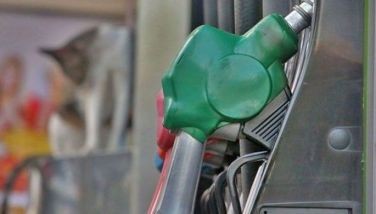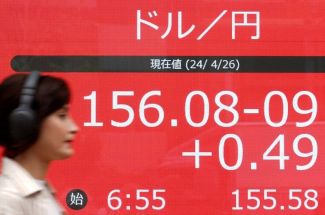Philippine pride

The banana industry has always been a source of pride and precious foreign exchange for the Philippines.
In 2017, world banana exports grew to 20.5 million tons, or 10 percent more than in 2016. Ecuador was the biggest exporter, followed by Guatemala, Costa Rica, Columbia, and the Philippines on the fifth spot. These top five exporters account for 80 percent of total shipments. The Philippines is the leading producer of bananas in Asia.
Last year, the Philippines exported around 1.6 million tons of bananas valued at about $700 million. Also in 2017, the local banana industry paid an estimated P50.3 billion in wages. All these despite the fact that it utilizes only 0.4 percent of the country’s total agricultural land or about 87, 782 hectares. This is what being a high-value crop is all about.
The world loves bananas. According to the Food and Agriculture Organization (FAO), bananas are the most popular and best-selling fruits in the world, followed by watermelons, apples, grapefruits, grapes, oranges, mangoes, plantains, tangerines, melons, pears, and pineapples.
Data from Horti Asia 2015 also reveals that banana is the largest single product category accounting for 18 percent of total fruit volume. Next are grapes, oranges and tangerines and mandarins, apples, pineapples, lemons and limes, peaches and nectarines, plums and sloes, grapefruits and pomelos, strawberries, cherries, cranberries and blueberries.
The Philippine banana export industry is basically Mindanao-based. The biggest producers are Bukidnon, Davao, Cotabato, Sarangani, Sultan Kudarat, Agusan, Surigao del Sur, Maguindanao, and Lanao del Sur.
Our world-class bananas, or Cavendish bananas, are exported to Japan, China, South Korea, United Arab Emirates, Iran, Iraq, Saudi Arabia, Hongkong, Kuwait, New Zealand, Malaysia, Qatar, Singapore, Russian Federation, Oman, Bahrain, North Korea, Mongolia, United States, Canada, Australia, Brunei, South Africa. Yes, if you see good-looking Cavendish bananas the next time you go abroad, more likely than not, they are from the Philippines.
According to data from the Philippine Statistics Authority, in 2016, electronic products accounted for 51.2 percent of exports with a value of $29.4 billion, followed by other manufactured goods (6.7 percent) at $3.87 billion, machinery and transport equipment (5.4 percent) at $3.085 billion, woodcrafts and furniture (5.2 percent) at $2.98 billion, ignition wiring set and other wiring sets (3.5 percent), chemicals (2.8 percent) at $1.6 billion, metal components (2.1 percent) at $1.2 billion, coconut oil (two percent) at $1.15 billion, articles of apparel and clothing (1.9 percent) at $1.09 billion, other mineral products (1.8 percent) at $1.049 billion, electronic equipment and parts (1.4 percent) at $825 million, processed food and beverages (1.3 percent) at $745 million, bananas (1.3 percent) at $730.36 million, miscellaneous manufactured articles (1.2 percent) at $710 million, and pineapple (1.2 percent) at $709 million.
But studies have shown that just like any local industry, the Philippine banana industry is faced with difficult challenges. Among these are disease and pestilence, changing weather, containerization, increase in the number of exporters and importers, subsidized ocean freight rates from Latin America to Asia, speed and interconnectivity of markets, the spot market, duties, and exchange rates.
And the reality is that our exports of bananas have been dropping over the years. From 237 million boxes in 2011, the volume has gone down to 187 million boxes in 2016. This reduction of about 50 million boxes amounts to nearly $300 million in losses to Mindanao.
Japan’s banana imports from the Philippines has dramatically been reduced from 85.7 million boxes in 2009 to 56.5 million boxes in 2016, while Japan’s imports from Latin America has gone up to 13.4 million boxes from only 6.2 million boxes. Korea’s imports from the Philippines have also declined from 28.1 million boxes to 22.8 million boxes during the same period, while its shipments from Latin America have increased from 0.2 million to 4.4 million boxes.
Even China’s purchases from us have gone up and down. From 22.2 million boxes in 2006, it went up to 51.8 million in 2011, then went down to 45.9 million in 2016. Meanwhile, its imports from Latin America increased from 0.5 million boxes in 2011 to 11.6 million in 2016.
The same trend has been noticed from other importers. Middle East banana imports from the Philippines dropped from 72.6 million boxes in 2010 to 53.6 million in 2016 while imports from Latin America during the same period went up from 3.5 million boxes to 29 million boxes. New Zealand’s imports also dropped from 4.4 million boxes in 2012 to 1.3 million boxes in 2016 while those from Latin America increased from 1.7 million to 5.7 million.
Asia and Middle East banana imports from the Philippines declined from 237 million in 2011 to only 187 million boxes in 2016, while those from Latin America increased from 10 to 68.
Industry statistics reveal that worldwide banana exports are estimated to reach one billion boxes last year, but production is surpassing demand and these increasing volumes are suppressing market prices.
China is expected to become the largest Asian importer and given China’s proximity to the Philippines, this should be good news for us. The Middle East also remains a growth market, while Russia, which in 2017 was the world’s second largest banana importer, is no longer one, studies show.
Our bananas are still the best. Unfortunately, we are not growing enough to supply foreign demand and other exporters are doing everything to take away our markets from us by reducing prices through means like reducing duties and subsidizing freight rates.
It is no longer an issue of one Philippine banana company competing against another company. It is the Philippines against the world. Our government should take notice of this fact and find means to help the local banana industry survive and thrive amidst intense, and sometimes unfair, world competition
For comments, e-mail at [email protected]
- Latest
- Trending























